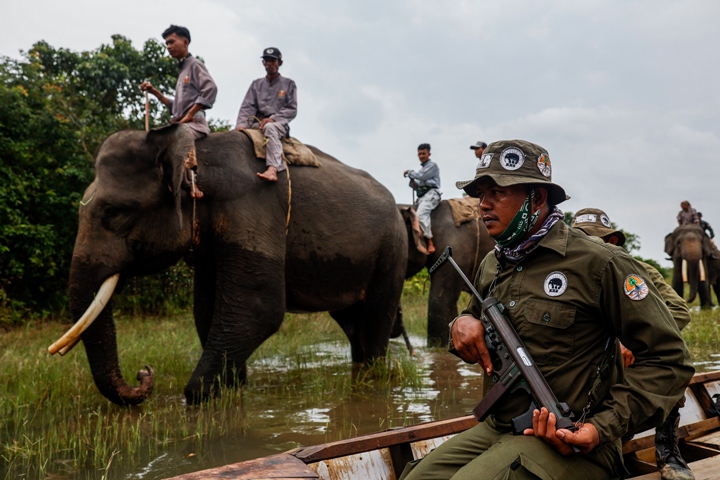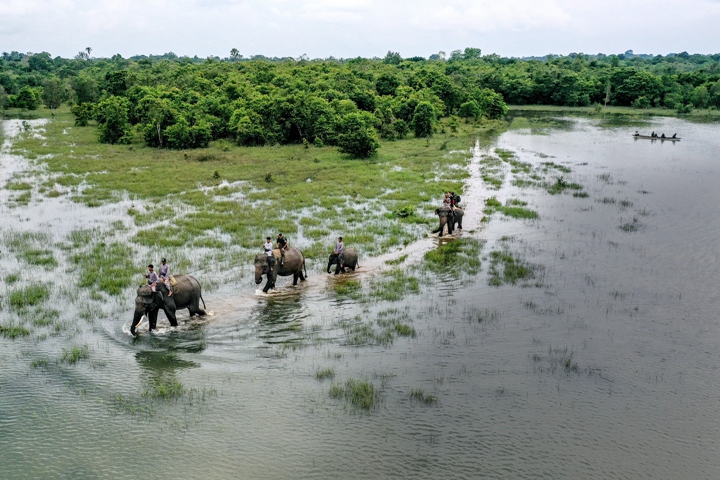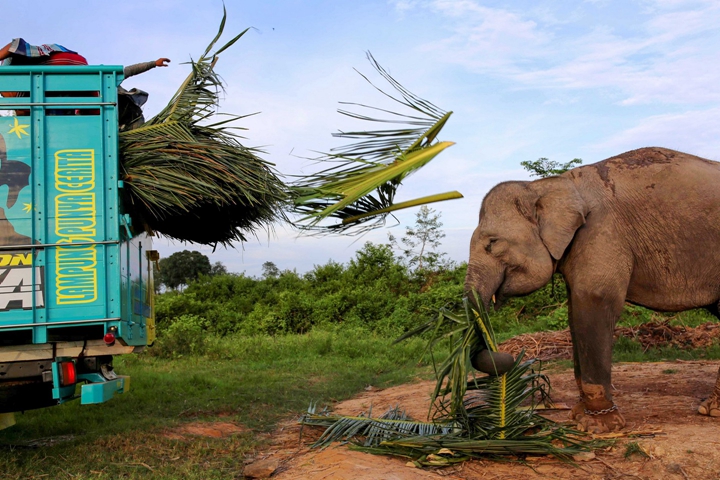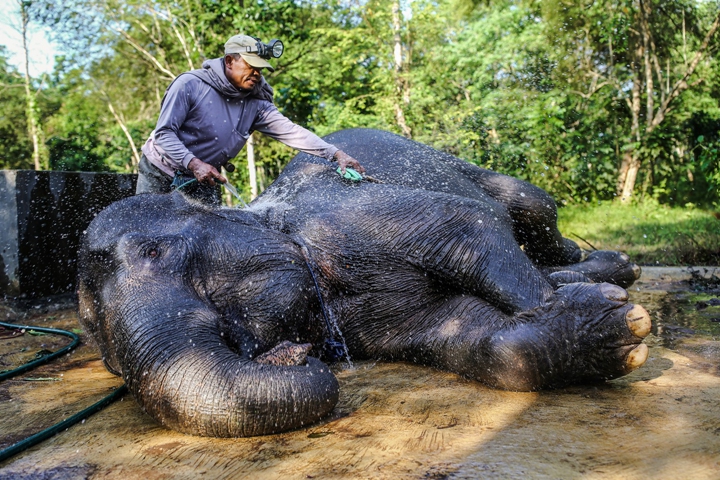Protecting the Endangered Sumatran Elephant
Text and photos by Garry Andrew Lotulung
Abridged by Syharn Shen (沈思含)
Protecting the Endangered Sumatran Elephant
Text and photos by Garry Andrew Lotulung
Abridged by Syharn Shen (沈思含)

During a routine patrol in the Way Kambas National Park in southern Sumatra, members of the Elephant Response Unit (ERU) ride on elephants and use a wooden boat to find illegal loggers destroying the habitat of Sumatran elephants.
Sumatra, an Indonesian island renowned for its volcanic landscapes and rugged tropical terrain, is also home to the largest populations of Asian elephants outside India and Sri Lanka. Yet, rapid deforestation has resulted in the loss of over two-thirds of the island's natural lowland forest in the past 25 years, endangering these majestic creatures. The Sumatran elephant was reclassified from "Endangered" to "Critically Endangered" in 2012 after losing half of its population in one generation. The International Union for Conservation of Nature estimated the shrinking population, from between 2,800 and 4,800 in 2007 to between 924 and 1,359 in 2021.
Way Kambas National Park is a key conservation area where 22 Sumatran elephants have died from poaching in the last decade. Evidence of poaching, such as missing tusks or tushes (the tusks of female elephants) in dead elephants as well as hunting tools and traps, continues to surface. Poachers often burn forests to locate elephants, leading to further ecological destruction.

The future of Sumatran elephants is bleak as poaching and human-elephant conflicts continue to occur.
Elephant poaching is widespread across Indonesia, including Jambi, East Java, Central Java, and Aceh. In the last ten years, 700 Sumatran elephants have been killed by poachers, leaving only 693 remaining as of 2019. The threat of extinction looms as human-elephant conflict intensifies due to deforestation and encroachment on elephant habitats.
Elephants are increasingly coming into contact with human settlements. They raid crops, trample homes and sometimes even hurt or kill people. In response, affected individuals sometimes retaliate by poisoning or shooting elephants. Efforts to control damage, such as digging trenches and altering cropping patterns, have had limited success. In the past 12 years, elephants have killed or injured 24 people in villages near Way Kambas National Park.

In search of food, wild elephants sometimes venture out of their protected habitat in national parks and damage lands and plantations in nearby villages.
Despite the use of thermal-detection cameras to track poachers, scientists predict that if current trends persist, Sumatran elephants could become extinct in the wild within 30 years. Elephant Response Units (ERUs), composed of forest rangers and mahouts (elephant handlers), have been trained for forest patrols. "Wild elephants usually stay in their territory. It is humans who enter the elephants' habitat and make them feel threatened,” said Hanafi, an octogenarian mahout with 30 years of experience.
Hanafi has cared for numerous elephants, some of which have been relocated to conservation organizations, zoos, and safari parks. Currently, he is responsible for Gading, a 4-year-old elephant who has lost his mother. Hanafi's daily tasks involve feeding and bathing the young elephant. To become a mahout, he says, requires intention, will, education, physical and spiritual health, and a sincere dedication to the work. Despite the challenges, Hanafi has no plans to leave the world of elephant conservation.

A mahout, or elephant handler, is in charge of bathing, feeding and caring for elephants.
Contact Us | Plan a Visit | Donate
8 Lide Road, Beitou 11259, Taipei, Taiwan
886-2-2898-9999
005741@daaitv.com
©Tzu Chi Culture and Communication Foundation
All rights reserved.
